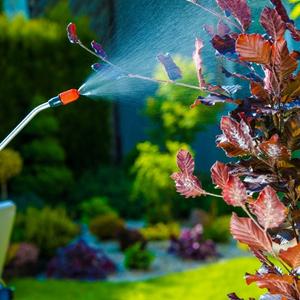After our first post on this subject, one of our readers asked if we would talk about how to spot what bugs are bugging their alstroemeria. We'll also share some environmentally gentle ways to keep them under control.
So here is how you can spot them as well as some additional possible solutions to the ones mentioned in our previous post.
Bugs that Bug Alstroemeria
Aphids
How to spot ‘em – In most cases they cause little or no damage to plant health. However, when the numbers get out of hand your alstroe can have twisted and curled/yellowed leaves, stunted or dead shoots and poor growth.
Solution – Wash them off with a strong spray of water. Plant other plants that will attract natural enemies like lady beetles and wasps, as mentioned above. Organic pesticide such as neem oil can help. However, be aware that using any product on your plants can deter beneficial pests such as pollinators.
Harlequin Bug
How to spot ‘em – Besides the fact that these bugs brightly coloured armour is easy to spot, the leaves will most likely be turning yellow and have white spotty areas that will eventually turn brown and cause the leaves to die.
Solution – Mustard plants are their favourite. Once they have all congregated on there you can then employ the manual pick-off-and-squash method as mentioned previously.
Snails and Slugs
How to spot ‘em – Irregular holes in the leaves and the flowers, aside from the usual tell-tale slime trails.
Solution – Besides the manual removal method, slugs and snails have many natural predators such as ground beetles, shrews, moles, hedgehogs, toads, lizards and songbirds. Many of these animals would not survive without their slugs and snails so make your garden into a mini ark for a variety of creatures.
Two-spotted Spider Mite
How to Spot ‘em – The undersides of affected leaves are tan or yellow and have a crusty texture. Heavy infestations of spider mite make a fine webbing that may cover the entire plant.
Solution – Manual removal and mindful use of organic pesticides can be effective. Predators include predatory mites, thrips, lacewings, and minute pirate bugs. Again, creating an environment that encourages these beneficial bugs is ultimately the key to bringing about balance.
Silverleaf and Sweetpotato Whiteflies
How to Spot ‘em – When the weather gets warmer, keep an eye out for these little sap-suckers. Related to aphids, scales and mealybugs, their name comes from the white wax covering the wings and body on adult whiteflies. You will see a sticky honey dew-like substance on the leaves and they will be yellowing or dying.
Solution – Again, the lacewings and pirate bugs can help with these too and parasitic wasps like Encarsia can help.
For more details on what these bugs look like and how to deal with them, have a look at this.
To conclude, it is possible to work in harmony with nature, but of course it may be a bit more of a trial and error process than a one-size-fits-all approach.
After all, these so-called “bugs” are just one little part of a system that hasn’t benefited from our “assistance” (read: interference).
What do you think?
Feel free to share your thoughts with us via social media.

Aphids

Harlequin Bug

Snails

Spider Mites







